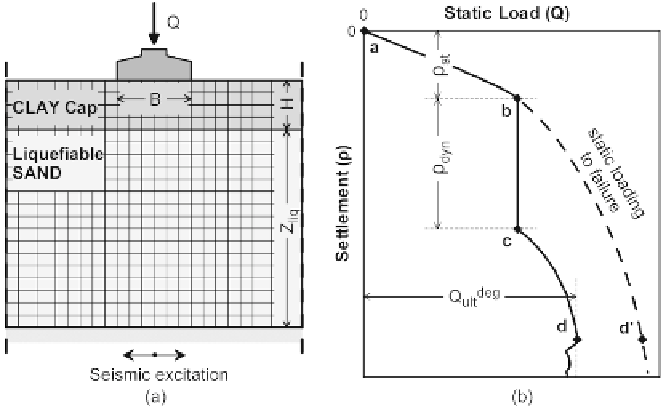Geoscience Reference
In-Depth Information
Fig. 11.2. Seismicload-settlement response ofshallow foundations on liquefiable soil
larger than the initial ones, due to static loading (part
ab
of the load-settlement
curve), and take place mostly(at apercentage of 80-90%) during shaking.
(b) Static loading to failure, following the end of shaking (part
cd
of the load-
settlementcurve),showsthatthebearingcapacityofthefootinghasbeendegraded
compared to the initial bearing capacity (branch
bd
of the curve), as the subsoil is
stillunder liquefaction and its shearing resistancehas nearly diminished.
Thus,foraperformance-baseddesignofthefoundation,thedegradedpost-shakingfactor
of safety against bearing capacity failure, but also the total settlement of the foundation
have to satisfycertain requirements, i.e.
Q
deg
ult
Q
FS
deg
=
>
FS
o
(11.1)
and
ρ
tot
=
ρ
st
+
ρ
dyn
<ρ
all
(11.2)
Thedesignvalues of
FS
o
maybedefinedinrelationwiththeseverityofshakingandthe
importanceofthestructure.Nevertheless,asitreferstoarathershort-livingthreat,which
will no longer exist when earthquake-induced excess pore pressures have dissipated, its
value must be well below the conventional values for static loads, and close to unity
(i.e.
FS
o
ρ
all
is a function
of safety but also operation requirements, and consequently it is specified by owners or
codeprovisions,dependinguponthetypeofstructureandthereturnperiodofthedesign
seismicactions.
=
1
.
00
−
1
.
50). On the other hand, the allowable settlement

